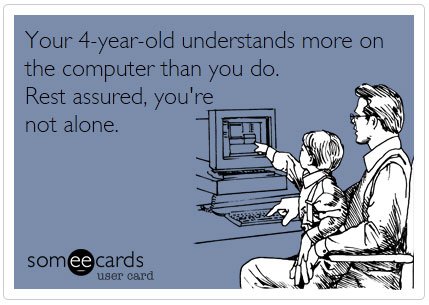 HME/DME Providers: Cure Medical is your partner and your manufacturer. We are here to help you succeed!
HME/DME Providers: Cure Medical is your partner and your manufacturer. We are here to help you succeed!
This article is designed for our distribution partners and dealers to assist with their efforts to educate, engage with and support the disability community as well as the medical professionals who assist our customers. As seen in March 2017 HME Business magazine.

Cash sales success hinges on providers blending traditional and online marketing strategies.
With cash sales becoming essential to the success of HME businesses, providers need to understanding that marketing is the secret, “miracle growth” ingredient for driving customers into your store.
But in an industry founded on funded transactions and referrals, many providers feel lost when it comes to branding and formulating marketing strategy, including how to mix traditional and on-line advertising.
“As an industry, HME providers are traditionally documentation and equipment usage experts, not marketing mavens,” says Lisa Wells. “Many of our strongest providers have a clinical background, which makes them well suited for working with patients but not so strong in the fine art of communication and promotion.”
Wells says that regardless of how you are selling, people need to find you at the point where they are searching, and for most that means venturing online, including via a mobile device.
So without a mobile friendly website and the use of Adwords or Google Map locations, your customers will find your competitors instead.

Regardless of how you are selling, people need to find you at the point where they are searching.
Although many experts feel that a mix of both traditional and online marketing is integral to success, Kamal Haddad, founder and CEO of HME e-commerce company Health Mobius LLC, says most HME providers should stick mainly with traditional marketing methods.
“There are many folks that have tried focusing their marketing efforts to a larger degree on the online marketplace without understanding why,” Haddard says. “That can lead to unrealistic expectations and undesired results. In my opinion those people have been misguided into thinking that a magic bullet exists online when, in fact, it does not. To be successful there should be a larger emphasis on traditional forms of marketing, with about 25 percent that use online marketing to support traditional marketing efforts.”
Haddard’s concern with placing too much emphasis away from the traditional marketplace has to do with not defining the brand and forgetting that HME providers are in a high-touch, high customer service business.
“Most providers cannot answer these basic questions: How would you describe your brand? How would your customers describe your brand? Are you excited about your brand?” Haddard explains. “Bottom line, if your customers are not excited about how you present your products and services, i.e. your brand, then you leave an open door for them to go elsewhere – and yes that includes shopping online elsewhere instead of from you. Your brand must be clearly defined and it must include marketing your retail cash sales strategy as an integral part of your plan to succeed.”
Maria Markusen, director of development for VGM Retail, says that her organization recommends that providers that are opening a new store use a 50-50 mix of traditional and retail. “You need a traditional method to get people in the door and that traditional method includes things like big signs and grand opening events where you invite referral sources,” she says.
She also says that your customer base will help dictate advertising ratios.
For example, if your product mix includes organic pain relief and is focused on a younger customer who uses sports-related products, you’re probably more 70 percent to 30 percent in regard to online vs. traditional.

It’s entirely possible to teach an old dog new tricks, especially when it comes to marketing in today’s retail sales environment.
TRADITIONAL MARKETING TIPS
Micah Swick, director of sales for Pride Mobility Products, which makes a number of retail items for HME providers, says that retail HME consumers are exactly that – retail consumers – and we all need to see them that way.
“It’s still somewhat common to think the person walking in the door will have a prescription for a particular product,” he says “Retail providers need to look at every person as a retail sales opportunity. This means using mainstream techniques, from point-of-purchase displays to interpersonal sales skill. Display products and create real discussions around how they can immediately benefit the consumer.”
Swick suggested that providers:
- Providers need on-hand, ready-to-buy inventory and spacious showrooms that invite customers to try the products.
- Present the product to customers with a sales approach that doesn’t rely solely on medical need but on quality-of-life benefits.
- Display products at targeted community events where demographic foot traffic draws product interest.
- Understand that the competitive landscape is changing. Long established retail companies are now recognizing the HME space as profit center.
Haddard says to be successful at traditional marketing, you need dedicated retail employees. Typical insurance intake employees do not always make great sales people. So Haddard recommended that if you are committing to retail, hire a great sales person and offer incentives like commissions. Let them be the go-to member of the team who will work with customers and educate them on accessories and products that will improve the lives of the caregiver as well as the patient.

Haddad also suggested:
- Proper signage and street exposure if you are in a retail location, as well as well-lit and properly grouped products by category in store. When laying out the planogram, you should properly display accessories as if in use.
- Wheelchairs should be presented with items like cushions, cup holders or pouches, for example.
- Referral sources who work with you on a regular basis can be one of your biggest assets when increasing your retail/cash sales business. Reach out to pharmacy chains, home health care, physician offices, assisted living facilities, and hospices in your service area.
Markusen says to create a loyalty programs, as the baby boomer and millennial populations are very loyal to brands. One way, she says, to drive customers to your programs is via direct mail.
ONLINE MARKETING TIPS
Markusen says that many of the clients she works with need updated websites. “We find providers that don’t have websites or have mistakes in them, or they are unprofessional and missing important items,” she says. “You need a place where people can find you when they begin to search for you.”
With that she says, search engine optimization management is key to getting online customers to find you.

The name of the game is ROI, regardless of whether you are selling online or in-person.
“We conduct business assessments in markets all over the country with the purpose of helping our members identify if a cash business or an expansion of retail makes sense, and, if so, should they stay where they are physically or should we find them a new location,” she says.
“One of the ways that we determine what the consumer knows about the market is a competitive online search analysis. We often find that people aren’t even in the top five when we search for lift chairs or research their name or whatever the case may be. If I’m a consumer and I look up lift chairs, I’m not going to know that you exist. I’m going to go by what is on Google.”
Integrated marketing is the major sticking point that she sees most providers are missing out on when they launch digital efforts in correlation with their traditional marketing programs.

Social media might be a teenager’s natural environment, but marketing strategy is not.
Often, she says, this is because the provider opts to have a college student or an employee’s child running their social media.
“If your social media is offering up all kinds of wheelchair information instead of targeted content to your core audience, you are diluting your efforts online and reducing your return on investment in terms of audience value for your business,” she says.
Wells adds that for brick and mortar stores, it’s nearly mandatory to be focusing on local search results with your Google Adwords campaigns. Google and other search engines are refining search results to offer up destinations based on the person’s location. Target your local search ads to appear on Google Maps. Google Maps ads help businesses be more visible when consumers are searching online for somewhere to shop.
Subscribe to HME Business Magazine here.
Have a Question about this Story?
Contact us!
Our distribution partner team is happy to assist you.
Thank you for Choosing a Cure!
You may also enjoy:
Complex Rehab + Urology: What Providers Should Know
Concerted Response from DME Stakeholders Key in Tariff Effort
HME Retail's Proven Winners: Categories for Cash Sales Success
How You Can Help Hurricane Harvey Victims Who Have Medical Needs
Urology Sales Pro-Tips: HME Business
Keep the Chemicals Out of Your Kids’ Catheters with Cure Medical
Understanding DEHP and Your Health
Dear Journalists & Media Professionals: Language Matters When Describing Disability

